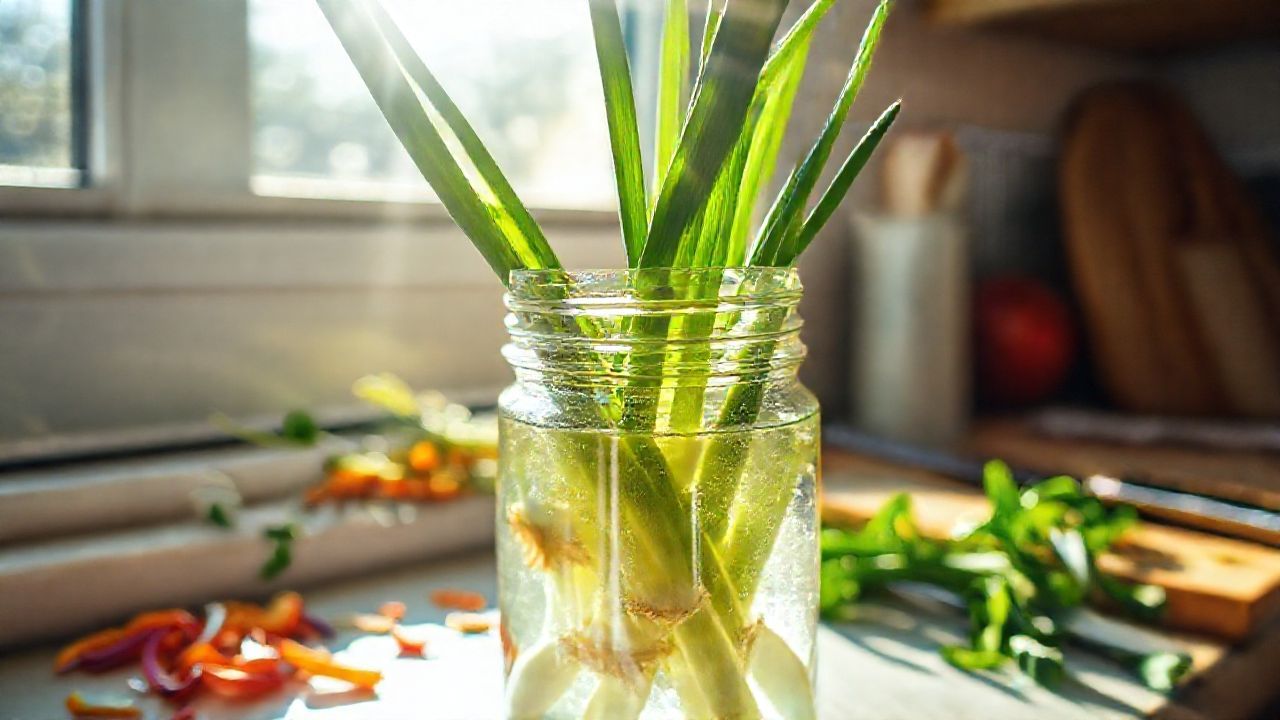Introduction to regrowing vegetables
Regrowing vegetables from scraps is an ingenious technique that harnesses the inherent regenerative potential of plants. This sustainable practice enables us to extend the life of our produce, minimize waste, and cultivate fresh, organic vegetables with minimal effort. Among the many vegetables that can be regrown, leeks stand out for their ease of growth and their versatility in culinary applications. In this article, we will delve into the art of growing leeks from scraps, providing a step-by-step guide and exploring the benefits and challenges associated with this sustainable approach.
Leeks, with their distinctive white stalks and leafy greens, are a versatile addition to any kitchen. Their mild oniony flavor complements soups, stews, and salads, offering a subtle yet rich depth of flavor. Traditionally, leeks have been grown from seedlings or transplants, which can be time-consuming and expensive. However, regrowing leeks from scraps offers a cost-effective and environmentally friendly alternative. By utilizing the base of leeks that would otherwise be discarded, we can obtain multiple harvests from a single purchase, reducing waste and promoting sustainable living.
What you need to regrow leeks
Leeks are a hardy vegetable that is easy to regrow from scraps. All you need is a leek that is at least 2 inches long with a healthy root system. To regrow leeks, simply follow these steps:
1. Cut off the green tops of the leek, leaving about 2 inches of white stem.
2. Place the leek in a glass of water, making sure that the root end is submerged.
3. Place the glass in a sunny window and change the water every few days.
4. Within a few weeks, you will see new roots and shoots growing from the leek.
5. Once the roots and shoots are well-established, you can transplant the leek into a pot or garden bed.
Leeks can be regrown multiple times, so don’t be afraid to experiment with different growing methods. With a little care and attention, you can enjoy fresh, homegrown leeks all year long.
Step-by-step guide to regrowing leeks from scraps
Growing leeks from scraps is an incredibly simple and rewarding process that can be enjoyed by gardeners of all levels. Not only is it a great way to save money, but it’s also a fun and sustainable way to grow your own fresh produce. With just a few simple steps, you can regrow leeks from scraps to create a continuous supply of this versatile vegetable. Whether you’re a seasoned gardener or a complete novice, this comprehensive guide will provide you with all the knowledge and instructions you need to successfully regrow leeks from scraps. From selecting the right scraps to harvesting and storing your leeks, we’ll cover every aspect of the process to ensure your success. So, let’s dive into the exciting world of leek regrowing and get started on creating your own year-round supply of this culinary delight!
Caring for regrown leeks
Conclusion: Grow leeks effortlessly
Growing leeks from scraps is an incredibly easy and rewarding method that allows you to cultivate fresh, flavorful leeks in your own garden. By utilizing the root ends of store-bought leeks, you can effortlessly propagate new plants without the need for seeds or expensive transplants. This sustainable and cost-effective technique is perfect for both novice and experienced gardeners alike. With minimal effort and a few simple steps, you can transform seemingly discarded produce into a thriving crop of nutrient-rich leeks.
Benefits of Growing Leeks from Scraps:
1. Cost-Effective: No need for purchasing seeds or transplants, saving you money.
2. Time-Saving: Direct regrowth from scraps eliminates the seed-starting process, speeding up the time to harvest.
3. Minimal Effort: Simply save the root ends, plant them in soil, and water regularly.
4. Sustainable: Reduces waste by reusing parts of vegetables that would otherwise be discarded.
5. Fresh and Flavorful: Homegrown leeks have superior flavor and nutritional value compared to store-bought varieties.
6. Easy to Propagate: The successful regrowth of leeks from scraps is highly reliable, ensuring a bountiful harvest with minimal risk.
Materials:
1. Root ends of store-bought leeks
2. Loose, well-draining potting mix
3. Container or raised bed
4. Watering can or hose
Steps:
1. Save the root end of a fresh leek, approximately 1-2 inches long.
2. Remove any wilted or damaged leaves, leaving only the white root base and the darker green base of the leaves.
3. Fill a container or raised bed with loose potting mix.
4. Create a hole about 2 inches deep and place the leek root end in the hole, with the white root base at the bottom.
5. Gently firm the soil around the leek, ensuring it is well-supported.
6. Water thoroughly and keep the soil moist but not soggy.
7. Place the container in a sunny location, preferably with at least 6 hours of sunlight daily.
8. Water regularly, especially during hot and dry weather.
9. Fertilize lightly every few weeks with a balanced liquid fertilizer.
10. Harvest leeks when they reach a desired size, typically around 1-2 inches in diameter.
By following these simple steps, you can effortlessly grow leeks from scraps, transforming discarded produce into a thriving crop of fresh, flavorful, and nutritious vegetables.

Leave a Reply